|
시장보고서
상품코드
1511339
세계의 크로스오버 차량 시장 : 차량 유형, 구동 유형, 추진 유형, 기어 트랜스미션, 용도, 최종 사용자, 지역별 분석 및 예측(-2030년)Crossover Vehicle Market Forecasts to 2030 - Global Analysis By Vehicle Type (Compact Crossovers, Mid-Size Crossovers, Full-Size Crossovers and Other Vehicle Types), Drive Type, Propulsion Type, Gear Transmission, Application, End User and By Geography |
||||||
Stratistics MRC에 따르면 세계 크로스오버 차량 시장은 2024년에 1억 8,000만 달러를 차지하고 예측 기간 동안 복합 연간 성장률(CAGR)은 6.8%를 나타낼 전망이며, 2030년에는 3억 5,000만 달러에 이를 것으로 예측되고 있습니다.
크로스오버 자동차는 종종 CUV라고 불리우며 기존의 SUV와 승용차의 하이브리드 차량으로 SUV의 실용성과 승용차의 편안함과 핸들링을 결합합니다. 일반적으로 유니 바디 구조의 자동차 플랫폼에 만들어져 넓은 실내 공간, 높은 좌석 위치, 다목적 화물칸 공간을 제공하기 때문에 다양한 라이프 스타일과 운전 환경 설정에 적합합니다. 그 인기는 가족 동반이나 통근자, 모험을 좋아하는 사람들에게도 매력적인 순응성의 높이에 있습니다.
국제자동차공업회(IMO)에 따르면 2017년과 2018년 세계 판매 대수는 상용차가 9,500만대, 승용차가 9,600만대였습니다.
확대되는 도시화
도시화의 확대는 다목적 운송 솔루션의 필요성을 강조함으로써 크로스오버 차량 수요를 촉진하고 있습니다. 도시의 고밀도화에 따라 소비자는 도시 주행에 필요한 민첩성과 일상 활동에 필요한 넓은 공간을 균형있게 제공하는 자동차를 점점 요구하고 있습니다. 크로스오버 차량은 충분한 수하물 공간, 높은 최저 지상고, 옵션의 전륜 구동에 의해 이 요구를 충족시켜, 다양한 라이프 스타일이나 액티비티에 대응하는 다용도성을 제공하면서, 시가지의 이동에 적합 따라서 도시 환경에서의 인기에 박차를 가하고 있습니다.
엄격한 배출가스 규제와 연비 기준
엄격한 배출가스 규제와 연비 기준은 제조업체에게 성능과 환경에 대한 배려의 균형을 요구하고 크로스오버 차량에 있어서 과제가 됩니다. 규정을 준수하려면 비용이 많이 드는 기술 업그레이드가 필요하며 차량 가격이 상승할 수 있습니다. 또한 이러한 기준을 충족하면 설계 유연성과 혁신성을 제한할 수 있으며 제조업체가 경쟁이 치열한 시장에서 제품을 차별화할 수 있는 능력을 제한하므로 이 부문의 성장을 방해합니다.
다용도로 넓은 차에 대한 수요 증가
소비자는 SUV와 같은 주행 성능과 승용차와 같은 편안함을 융합시킨 차를 요구하게 되어 크로스오버는 매력적인 선택이 되고 있습니다. 크로스오버는 충분한 수하물 공간, 조수석, 다양한 라이프스타일과 액티비티에 대응하는 다용도성을 갖추고 있습니다. 도시화가 진행되고 소비자의 선호도가 진화함에 따라 크로스오버 부문은 실용성, 쾌적성, 적응성을 하나의 패키지로 제공하는 차량에 대한 수요에 부응하기 위해 확대를 계속하고 있습니다.
전기자동차로 소비자 이동
소비자의 전기차로의 이동은 새로운 선호와 우선순위를 가져오기 때문에 크로스오버 차량 시장의 성장에 어려움이 됩니다. 크로스오버 차량은 다용도성과 넓은 공간을 제공하는 반면, 전기자동차에 대한 수요 증가는 항속 거리, 충전 인프라, 환경의 지속가능성 등의 요소를 중시합니다. 이러한 변화는 소비자의 관심과 자원을 기존의 크로스오버 모델에서 벗어날 수 있으며, 자동차 제조업체가 전기자동차 개척에 투자하도록 촉구하고 크로스오버 시장 부문 확대에 주력을 약화시킬 수 있습니다.
COVID - 19의 영향
COVID - 19의 유행은 크로스오버 자동차 시장에 큰 영향을 미쳤습니다. 처음에는 경기 불투명감, 봉쇄 조치, 개인 소비 감소로 매출이 크게 감소했습니다. 그러나 규제가 완화되고 사람들이 더 안전한 교통수단을 요구하게 되면 크로스오버 차량 수요가 부활했습니다. 또한 원격 근무으로의 전환으로 통근과 레저 모두에 적합한 차량에 대한 관심이 높아지고 공급망의 과제와 소비 마인드의 변동이 계속되고 있음에도 불구하고 크로스 오버 차량 판매가 더욱 강화되었습니다. 되었습니다.
예측 기간 동안 하이브리드 부문이 최대가 될 전망입니다.
하이브리드 부문은 유리한 성장을 이룰 것으로 추정됩니다. 하이브리드 추진 크로스오버 차량은 전기 엔진과 내연 엔진을 모두 통합하여 기존과 비교하여 연료 효율 향상과 배출 가스 절감을 실현하고 있습니다. 이 차량은 회생 브레이크를 사용하여 배터리를 충전하며, 종종 전원 간의 원활한 전환을위한 첨단 기술을 갖추고 있습니다. 하이브리드 크로스오버는 성능과 다용도를 희생하지 않고 환경 친화적인 교통 수단을 요구하는 환경 의식이 높은 소비자에게 호소합니다.
예측 기간 동안 복합 연간 성장률(CAGR)이 가장 높을 것으로 예상되는 것은 도시 통근 부문입니다.
예측 기간 동안 복합 연간 성장률(CAGR)이 가장 높을 것으로 예상되는 것은 도시 통근 부문입니다. 크로스오버 차량은 SUV의 유틸리티와 자동차와 같은 핸들링의 융합으로 도시 지역 통근에 인기가 높아지고 있습니다. 시가지 이동에 적합한 컴팩트한 크기와 충분한 수하물 공간을 갖춘 크로스오버 자동차는 도시적인 라이프 스타일에 다용도를 제공합니다. 연비 효율, 첨단 안전 시스템, 연결 옵션 등의 특징은 혼잡한 환경에서의 실용성과 쾌적성을 요구하는 도시 통근자의 요구에 부응하고 있습니다.
최대 점유율을 차지하는 지역 :
아시아태평양은 도시화, 가처분 소득 증가, 소비자 선호도 변화에 견인되어 예측 기간 동안 최대 시장 점유율을 차지할 것으로 예측됩니다. 도시와 농촌 환경에 적합한 범용성이 높은 자동차에 대한 수요 증가가 판매에 박차를 가하고 있습니다. 중국, 인도, 일본 등의 소비자들은 다용도, 실용성, 스타일에서 크로스오버 차량으로 점점 더 매료되고 있습니다. 또한 정부의 우대 조치와 배출 가스 규제의 강화가 연비 효율이 높은 크로스 오버 모델의 채용을 뒷받침하고 있습니다.
복합 연간 성장률(CAGR)이 가장 높은 지역 :
북미는 그 다용도와 실용성으로 예측 기간 동안 가장 높은 복합 연간 성장률(CAGR)을 나타낼 것으로 예측됩니다. 포드, 토요타, 혼다와 같은 선도 기업들이 이 부문을 지배하고 있으며, 다양한 소비자의 취향에 부응하기 위해 다양한 크로스오버 옵션을 제공합니다. 하이브리드 자동차 및 전기자동차를 포함한 기술의 진보는 환경 의식이 높은 소비자에게 호소하고 시장 전망을 더욱 다양화하고 있습니다.
무료 맞춤 서비스
이 보고서를 구독하는 고객에게는 다음 무료 맞춤설정 옵션 중 하나를 제공합니다.
- 기업 프로파일
- 추가 시장 기업의 종합적 프로파일링(3개사까지)
- 주요 기업의 SWOT 분석(3개사까지)
- 지역 세분화
- 고객의 관심에 응한 주요국 시장 추계,예측,복합 연간 성장률(CAGR)(주 : 타당성 확인에 따름)
- 경쟁 벤치마킹
- 제품 포트폴리오, 지리적 존재, 전략적 제휴에 기반한 주요 기업 벤치마킹
목차
제1장 주요 요약
제2장 서문
- 개요
- 이해관계자
- 조사 범위
- 조사 방법
- 데이터 마이닝
- 데이터 분석
- 데이터 검증
- 조사 접근
- 조사 정보원
- 1차 조사 정보원
- 2차 조사 정보원
- 전제조건
제3장 시장 동향 분석
- 성장 촉진요인
- 억제요인
- 기회
- 위협
- 용도 분석
- 최종 사용자 분석
- 신흥 시장
- COVID - 19의 영향
제4장 Porter's Five Forces 분석
- 공급기업의 협상력
- 구매자의 협상력
- 대체품의 위협
- 신규 참가업체의 위협
- 경쟁 기업간 경쟁 관계
제5장 세계 크로스오버 자동차 시장 : 차량 유형별
- 컴팩트 크로스오버
- 미드 사이즈 크로스오버
- 풀 사이즈 크로스오버
- 기타 차량 유형
제6장 세계 크로스오버 자동차 시장 : 구동 유형별
- 전륜 구동(FWD)
- 후륜 구동(RWD)
- 전륜 구동(AWD)
- 사륜 구동(4WD)
제7장 세계 크로스오버차 시장 : 추진 유형별
- 가솔린
- 하이브리드
- 플러그인 하이브리드(PHEV)
- 전기
- 기타 추진 유형
제8장 세계 크로스오버 자동차 시장 : 기어 트랜스미션별
- 오토매틱 트랜스미션
- 무단 변속기(CVT)
- 듀얼 클러치 변속기(DCT)
제9장 세계 크로스오버차 시장 : 용도별
- 도시 통근
- 가족용 교통
- 택시 서비스
- 견인과 운반
- 기타 용도
제10장 세계 크로스오버 자동차 시장 : 최종 사용자별
- 개인 소비자
- 플릿 오퍼레이터
- 아웃도어 애호가
- 어드벤처 투어리즘 사업자
- 기타 최종 사용자
제11장 세계 크로스오버차 시장 : 지역별
- 북미
- 미국
- 캐나다
- 멕시코
- 유럽
- 독일
- 영국
- 이탈리아
- 프랑스
- 스페인
- 기타 유럽
- 아시아태평양
- 일본
- 중국
- 인도
- 호주
- 뉴질랜드
- 한국
- 기타 아시아태평양
- 남미
- 아르헨티나
- 브라질
- 칠레
- 기타 남미
- 중동 및 아프리카
- 사우디아라비아
- 아랍에미리트(UAE)
- 카타르
- 남아프리카
- 기타 중동 및 아프리카
제12장 주요 발전
- 계약/파트너십/협업/합작투자(JV)
- 인수와 합병
- 신제품 발매
- 사업 확대
- 기타 주요 전략
제13장 기업 프로파일링
- Toyota Motor Corporation
- Honda Motor Limited
- Nissan Motor Corporation
- Ford Motor Company
- Chevrolet
- Hyundai Motor Company
- Kia Corporation
- Mitsubishi Motors Corporation
- Mazda Corporation
- Volkswagen Group
- Jeep
- Audi AG
- Bayerische Motoren Werke AG(BMW Group)
- Mercedes - Benz
- Volvo
According to Stratistics MRC, the Global Crossover Vehicle Market is accounted for $0.18 billion in 2024 and is expected to reach $0.35 billion by 2030 growing at a CAGR of 6.8% during the forecast period. Crossover vehicles, often referred to as CUVs, are a hybrid between traditional SUVs and passenger cars, blending the utility of an SUV with the comfort and handling of a car. Typically built on a car platform with a unibody construction, they offer spacious interiors, elevated seating positions, and versatile cargo space, making them suitable for various lifestyles and driving preferences. Their popularity stems from their adaptable nature, appealing to families, commuters, and adventure-seekers alike.
According to the International Organisation of Motor Vehicle Manufacturers, 95 million and 96 million commercial and passenger automobiles were sold globally in 2017 and 2018.
Market Dynamics:
Driver:
Expanding urbanization
Expanding urbanization fuels demand for crossover vehicles by emphasizing the need for versatile transportation solutions. As cities grow denser, consumers increasingly seek vehicles that offer a balance between the agility required for urban driving and the spaciousness needed for everyday activities. Crossover vehicles fulfil this need by providing ample cargo space, higher ground clearance, and optional all-wheel drive, making them well-suited for navigating city streets while offering the versatility to handle diverse lifestyles and activities, thereby fueling their popularity in urban environments.
Restraint:
Stringent emissions regulations & fuel economy standards
Stringent emissions regulations and fuel economy standards pose challenges for crossover vehicles by requiring manufacturers to balance performance with environmental concerns. Compliance may necessitate costly technology upgrades, potentially increasing vehicle prices. Moreover, meeting these standards could limit design flexibility and innovation, constraining manufacturers' ability to differentiate their products in a highly competitive market, thus impeding the segment's growth.
Opportunity:
Growing demand for versatile & spacious vehicles
Consumers increasingly seek vehicles that offer a blend of SUV-like capabilities and car-like comfort, making crossovers an attractive option. These vehicles provide ample cargo space, passenger seating, and versatility for various lifestyles and activities. As urbanization progresses and consumer preferences evolve, the crossover segment continues to expand to meet the demand for vehicles that offer practicality, comfort, and adaptability in a single package.
Threat:
Consumer shift towards electric vehicles
The consumer shift towards electric vehicles poses challenges for the growth of the crossover vehicles market as it introduces new preferences and priorities. While crossover vehicles offer versatility and spaciousness, the increasing demand for electric vehicles emphasizes factors like range, charging infrastructure, and environmental sustainability. This shift may divert consumer attention and resources away from traditional crossover models, prompting automakers to invest more heavily in electric vehicle development and potentially reducing the focus on expanding the crossover market segment.
Covid-19 Impact
The covid-19 pandemic significantly impacted the crossover vehicle market. Initially, sales declined sharply due to economic uncertainty, lockdown measures, and reduced consumer spending. However, as restrictions eased and people sought safer transportation options, crossover vehicles saw resurgence in demand. Additionally, the shift towards remote work increased interest in vehicles suitable for both commuting and leisure activities, further bolstering crossover sales despite ongoing supply chain challenges and fluctuating consumer confidence.
The hybrid segment is expected to be the largest during the forecast period
The hybrid segment is estimated to have a lucrative growth. Hybrid propulsion crossover vehicles integrate both electric and internal combustion engines, offering improved fuel efficiency and reduced emissions compared to traditional counterparts. These vehicles utilize regenerative braking to recharge their batteries and often feature advanced technology for seamless switching between power sources. Hybrid crossovers appeal to environmentally conscious consumers seeking eco-friendly transportation without sacrificing performance or versatility.
The urban commuting segment is expected to have the highest CAGR during the forecast period
The urban commuting segment is anticipated to witness the highest CAGR growth during the forecast period. Crossover vehicles are increasingly popular for urban commuting due to their blend of SUV utility and car-like handling. With compact dimensions suitable for navigating city streets and ample cargo space, they offer versatility for urban lifestyles. Features like fuel efficiency, advanced safety systems, and connectivity options cater to the needs of urban commuters seeking practicality and comfort in congested environments.
Region with largest share:
Asia Pacific is projected to hold the largest market share during the forecast period driven by urbanization, increasing disposable incomes, and changing consumer preferences. Rising demand for versatile vehicles suitable for both urban and rural environments has spurred sales. Consumers in countries like China, India, and Japan are increasingly drawn to crossover vehicles for their versatility, practicality, and style. Additionally, government incentives and tightening emissions regulations are encouraging the adoption of fuel-efficient crossover models.
Region with highest CAGR:
North America is projected to have the highest CAGR over the forecast period, owing to their versatility and utility. Major players like Ford, Toyota, and Honda dominate the segment, offering a diverse range of crossover options to cater to varied consumer preferences. Technological advancements, including hybrid and electric variants, further diversify the market landscape, appealing to eco-conscious consumers.
Key players in the market
Some of the key players profiled in the Crossover Vehicle Market include Toyota Motor Corporation, Honda Motor Limited, Nissan Motor Corporation, Ford Motor Company, Chevrolet, Hyundai Motor Company, Kia Corporation, Mitsubishi Motors Corporation, Mazda Corporation, Volkswagen Group, Jeep, Audi AG, Bayerische Motoren Werke AG (BMW Group), Mercedes-Benz and Volvo.
Key Developments:
In October 2023, Mitsubishi Motors Corporation launched Mitsubishi D:X Concept electrified crossover MPV. The design features large-diameter tires, sturdy over fenders, and front and rear skid plates for off-road performance under rough conditions. The car features a raked front windscreen, moonroof, LED laser projector headlights, mud-terrain tires, and rugged black plastic flares at each wheel.
In September 2023, Nissan Motor Co., Ltd. launched a series of exciting all-electric concept vehicles, Nissan Hyper Urban crossover. The Nissan Hyper Urban's styling perfectly complements its target users, such as urban- and suburban-based professionals who prioritize environmental sustainability.
Vehicle Types Covered:
- Compact Crossovers
- Mid-Size Crossovers
- Full-Size Crossovers
- Other Vehicle Types
Drive Types Covered:
- Front-Wheel Drive (FWD)
- Rear-Wheel Drive (RWD)
- All-Wheel Drive (AWD)
- Four-Wheel Drive (4WD)
Propulsion Types Covered:
- Gasoline
- Hybrid
- Plug-in Hybrid (PHEV)
- Electric
- Other Propulsion Types
Gear Transmissions Covered:
- Automatic Transmission
- Continuously Variable Transmission (CVT)
- Dual-Clutch Transmission (DCT)
Applications Covered:
- Urban Commuting
- Family Transport
- Taxi Services
- Towing & Hauling
- Other Applications
End Users Covered:
- Individual Consumers
- Fleet Operators
- Outdoor Enthusiasts
- Adventure Tourism Operators
- Other End Users
Regions Covered:
- North America
- US
- Canada
- Mexico
- Europe
- Germany
- UK
- Italy
- France
- Spain
- Rest of Europe
- Asia Pacific
- Japan
- China
- India
- Australia
- New Zealand
- South Korea
- Rest of Asia Pacific
- South America
- Argentina
- Brazil
- Chile
- Rest of South America
- Middle East & Africa
- Saudi Arabia
- UAE
- Qatar
- South Africa
- Rest of Middle East & Africa
What our report offers:
- Market share assessments for the regional and country-level segments
- Strategic recommendations for the new entrants
- Covers Market data for the years 2022, 2023, 2024, 2026, and 2030
- Market Trends (Drivers, Constraints, Opportunities, Threats, Challenges, Investment Opportunities, and recommendations)
- Strategic recommendations in key business segments based on the market estimations
- Competitive landscaping mapping the key common trends
- Company profiling with detailed strategies, financials, and recent developments
- Supply chain trends mapping the latest technological advancements
Free Customization Offerings:
All the customers of this report will be entitled to receive one of the following free customization options:
- Company Profiling
- Comprehensive profiling of additional market players (up to 3)
- SWOT Analysis of key players (up to 3)
- Regional Segmentation
- Market estimations, Forecasts and CAGR of any prominent country as per the client's interest (Note: Depends on feasibility check)
- Competitive Benchmarking
- Benchmarking of key players based on product portfolio, geographical presence, and strategic alliances
Table of Contents
1 Executive Summary
2 Preface
- 2.1 Abstract
- 2.2 Stake Holders
- 2.3 Research Scope
- 2.4 Research Methodology
- 2.4.1 Data Mining
- 2.4.2 Data Analysis
- 2.4.3 Data Validation
- 2.4.4 Research Approach
- 2.5 Research Sources
- 2.5.1 Primary Research Sources
- 2.5.2 Secondary Research Sources
- 2.5.3 Assumptions
3 Market Trend Analysis
- 3.1 Introduction
- 3.2 Drivers
- 3.3 Restraints
- 3.4 Opportunities
- 3.5 Threats
- 3.6 Application Analysis
- 3.7 End User Analysis
- 3.8 Emerging Markets
- 3.9 Impact of Covid-19
4 Porters Five Force Analysis
- 4.1 Bargaining power of suppliers
- 4.2 Bargaining power of buyers
- 4.3 Threat of substitutes
- 4.4 Threat of new entrants
- 4.5 Competitive rivalry
5 Global Crossover Vehicle Market, By Vehicle Type
- 5.1 Introduction
- 5.2 Compact Crossovers
- 5.3 Mid-Size Crossovers
- 5.4 Full-Size Crossovers
- 5.5 Other Vehicle Types
6 Global Crossover Vehicle Market, By Drive Type
- 6.1 Introduction
- 6.2 Front-Wheel Drive (FWD)
- 6.3 Rear-Wheel Drive (RWD)
- 6.4 All-Wheel Drive (AWD)
- 6.5 Four-Wheel Drive (4WD)
7 Global Crossover Vehicle Market, By Propulsion Type
- 7.1 Introduction
- 7.2 Gasoline
- 7.3 Hybrid
- 7.4 Plug-in Hybrid (PHEV)
- 7.5 Electric
- 7.6 Other Propulsion Types
8 Global Crossover Vehicle Market, By Gear Transmission
- 8.1 Introduction
- 8.2 Automatic Transmission
- 8.3 Continuously Variable Transmission (CVT)
- 8.4 Dual-Clutch Transmission (DCT)
9 Global Crossover Vehicle Market, By Application
- 9.1 Introduction
- 9.2 Urban Commuting
- 9.3 Family Transport
- 9.4 Taxi Services
- 9.5 Towing & Hauling
- 9.6 Other Applications
10 Global Crossover Vehicle Market, By End User
- 10.1 Introduction
- 10.2 Individual Consumers
- 10.3 Fleet Operators
- 10.4 Outdoor Enthusiasts
- 10.5 Adventure Tourism Operators
- 10.6 Other End Users
11 Global Crossover Vehicle Market, By Geography
- 11.1 Introduction
- 11.2 North America
- 11.2.1 US
- 11.2.2 Canada
- 11.2.3 Mexico
- 11.3 Europe
- 11.3.1 Germany
- 11.3.2 UK
- 11.3.3 Italy
- 11.3.4 France
- 11.3.5 Spain
- 11.3.6 Rest of Europe
- 11.4 Asia Pacific
- 11.4.1 Japan
- 11.4.2 China
- 11.4.3 India
- 11.4.4 Australia
- 11.4.5 New Zealand
- 11.4.6 South Korea
- 11.4.7 Rest of Asia Pacific
- 11.5 South America
- 11.5.1 Argentina
- 11.5.2 Brazil
- 11.5.3 Chile
- 11.5.4 Rest of South America
- 11.6 Middle East & Africa
- 11.6.1 Saudi Arabia
- 11.6.2 UAE
- 11.6.3 Qatar
- 11.6.4 South Africa
- 11.6.5 Rest of Middle East & Africa
12 Key Developments
- 12.1 Agreements, Partnerships, Collaborations and Joint Ventures
- 12.2 Acquisitions & Mergers
- 12.3 New Product Launch
- 12.4 Expansions
- 12.5 Other Key Strategies
13 Company Profiling
- 13.1 Toyota Motor Corporation
- 13.2 Honda Motor Limited
- 13.3 Nissan Motor Corporation
- 13.4 Ford Motor Company
- 13.5 Chevrolet
- 13.6 Hyundai Motor Company
- 13.7 Kia Corporation
- 13.8 Mitsubishi Motors Corporation
- 13.9 Mazda Corporation
- 13.10 Volkswagen Group
- 13.11 Jeep
- 13.12 Audi AG
- 13.13 Bayerische Motoren Werke AG (BMW Group)
- 13.14 Mercedes-Benz
- 13.15 Volvo



















